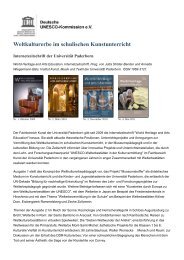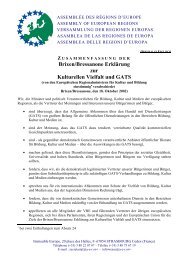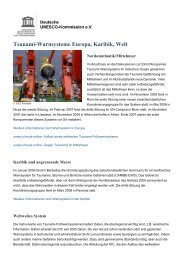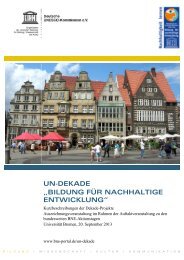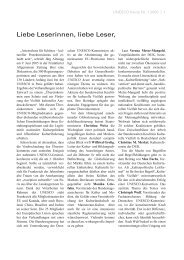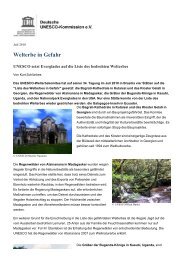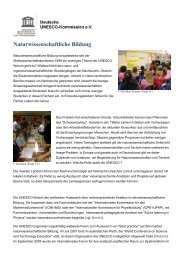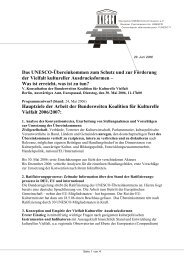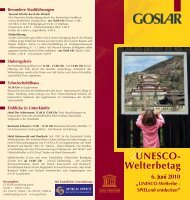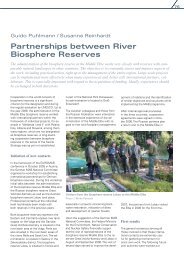Media and information literacy curriculum for teachers.pdf - Yo! BaNa
Media and information literacy curriculum for teachers.pdf - Yo! BaNa
Media and information literacy curriculum for teachers.pdf - Yo! BaNa
Create successful ePaper yourself
Turn your PDF publications into a flip-book with our unique Google optimized e-Paper software.
THE CURRICULUM<br />
FRAMEWORK<br />
Based on the recommendations of the UNESCO expert group on MIL 3 <strong>and</strong> the modules<br />
developed in the <strong>curriculum</strong> to accompany the framework, three key interrelated thematic<br />
areas have been delineated as the broad <strong>curriculum</strong> areas under which the MIL <strong>curriculum</strong><br />
<strong>for</strong> <strong>teachers</strong> is framed. They are:<br />
1. Knowledge <strong>and</strong> underst<strong>and</strong>ing of media <strong>and</strong> <strong>in<strong>for</strong>mation</strong> <strong>for</strong> democratic discourses<br />
<strong>and</strong> social participation.<br />
2. Evaluation of media texts <strong>and</strong> <strong>in<strong>for</strong>mation</strong> sources.<br />
3. Production <strong>and</strong> use of media <strong>and</strong> <strong>in<strong>for</strong>mation</strong>.<br />
These have been linked with six key areas of general education <strong>and</strong> teacher development to<br />
depict their progressive relationship <strong>and</strong> create a <strong>curriculum</strong> framework <strong>for</strong> the UNESCO<br />
MIL Curriculum Framework <strong>for</strong> Teachers (see Table 1).<br />
22<br />
The MIL <strong>curriculum</strong> framework <strong>and</strong> accompanying <strong>curriculum</strong> modules are nonprescriptive<br />
so as to facilitate their adaptation to global, regional <strong>and</strong> national strategies.<br />
(See the Adaptation Process <strong>and</strong> Integration Strategies sections of the Introduction to<br />
Part 2 of the MIL Curriculum <strong>for</strong> more <strong>in<strong>for</strong>mation</strong>.) They should be flexible enough to<br />
be adapted to fit different educational <strong>and</strong> institutional systems <strong>and</strong> tailored to local<br />
needs. However, UNESCO considers that any useful exposure of <strong>teachers</strong> to MIL should<br />
necessarily include elements which emphasize the fundamental freedoms as outlined<br />
in Article 19 of the Universal Declaration of Human Rights. In whatever adapted <strong>for</strong>m,<br />
the MIL <strong>curriculum</strong> should help develop <strong>teachers</strong>’ underst<strong>and</strong>ing of the importance of<br />
these fundamental freedoms <strong>and</strong> rights as an integral part of civic education, first in the<br />
classroom environment <strong>and</strong> also in the local <strong>and</strong> global environments.<br />
The MIL <strong>curriculum</strong> is relevant in print <strong>and</strong> audiovisual environments including newspapers,<br />
books, broadcast media such as radio <strong>and</strong> television, <strong>and</strong> in online news media <strong>and</strong> other<br />
<strong>in<strong>for</strong>mation</strong> providers. Thus, the training of MIL <strong>teachers</strong> should not be seen as reserved<br />
only <strong>for</strong> those with access to advanced technologies. It is equally applicable in contexts<br />
where use of advanced technologies is limited.<br />
3 This document draws on the recommendations of the UNESCO International Expert Group on Teacher Training Curricula<br />
<strong>for</strong> <strong>Media</strong> <strong>and</strong> In<strong>for</strong>mation Literacy, 2008.




